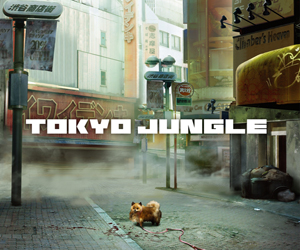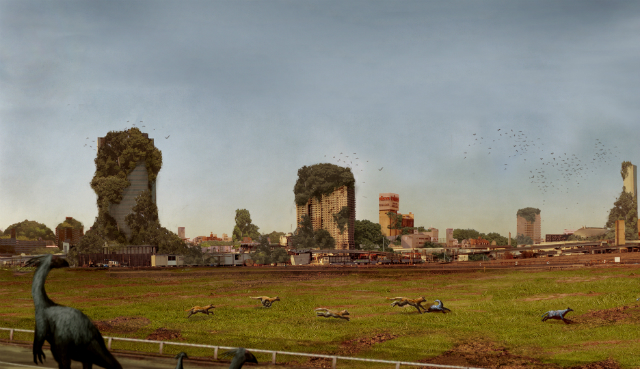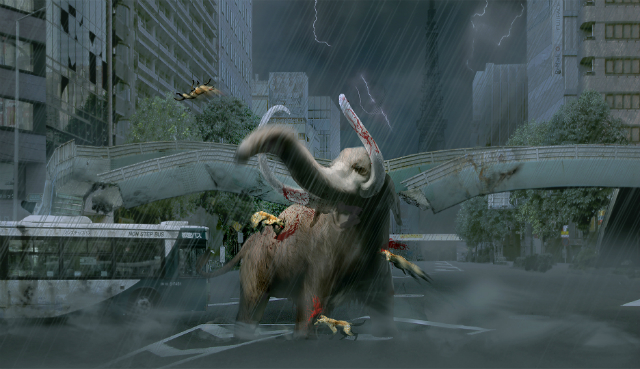Tokyo Jungle Review
 Game: Tokyo Jungle
Game: Tokyo Jungle
Developer: SCE Japan Studio, Crispy’s and PlayStation C.A.M.P
Publisher: Sony Computer Entertainment
Available on: PlayStation Network Only
Some things don’t translate very well between cultures. In a large area of the Western world, giving someone a thumbs up is generally associated with a positive reaction. However, in Iran it is more a kin to a middle finger, meaning something like “can you please leave me alone, you cretin”, or words to that effect.
Tokyo Jungle is indubitably Japanese. Yes, the clue is in the name, but on top of that, once the PS3 exclusive is booted up, it’s evident that everything about this game comes from the East. In some cases, that’s terrific, in others, not so much. In Tokyo Jungle’s particular case, it’s a pinch from column A and a dollop from column B. What could have been a fun title about animals running rampant in a post apocalyptic Japan, turns out to be bogged down by peculiar decisions in the layouts of certain modes, poor execution on a few fronts and random difficulty spikes.

The premise of Tokyo Jungle is mental. Absolutely bonkers. Humans are extinct in the year 20XX and the animal kingdom now roam the city streets of Tokyo, Japan. The term “animal instinct” is very apt as every carnivore and herbivore you come across is out for themselves. It truly is a dog eat dog world. Regardless of the terrible pun, that statement is very apropos. Beagles aren’t perturbed to chow down on one of their own in this re-imagining of Japan’s capital.
And that’s the name of the game here; kill or be killed. In Tokyo Jungle, there are two modes; Survival Mode and Story Mode. Survival Mode is the crux of the title as it encompasses a real sense of an animal infested state, wherein the player must fight for their life for as long as possible. Years pass by every 60 seconds and you’ll be celebrating your 21st before you know it. Initially, it only offers up two playable characters; the Pomerian and the Sika Deer. With both, the player can understand the different styles in which this game is played. The Pomerian is a carnivore and therefore will hunt and kill other animals to obtain food, whilst the Sika Deer depends on the flora that is available to them in the environment. Being a predator (carnivore) over a grazer (herbivore) doesn’t necessarily mean victory in the animal wars. Both groupings have their positives and negatives for hunting, or evading danger, which prolongs the appeal of the game. However, it must be said that predators do seem to tip the scales in their favour.
Survival Mode will involve you taking over territories in the decent sized map, mating with females of the species and trying to stay alive for as long as possible. As you change generation, your offspring will inherit some of your strength and endurance, and form a pack. You may only control one of the litter at any given time, but if a Golden Retriever sinks his teeth into you, you assume control of one of their siblings. Grazers would do best to avoid confrontation, and within the world of Tokyo Jungle, there are nods to a famous Carboard Box wearing man that make that possible. The Metal Gear Solid references are a plenty; from exclamation marks above predator heads, to containers that envelope you and enable you to sneak, to Snake Eater style tall grass to lay low in. MGS is here in abundance. The MGS nods are a nice touch, but the stealth aspect of the game is nowhere near as polished as Kojima’s games. Set-ups that are very similar may lead to enemies spotting you one minute and turning a blind eye the next. Predators are also relentless once they’ve seen you and will do everything in their power to see you go down, which can happen in the blink of an eye. There is a map in the corner of the screen which you can see during gameplay, but there are no indications as to what breed of animals are in your vicinity. This leads to instant death sometimes, which leads to controllers being thrown across the room.

Food is an essential part of Tokyo Jungle, of course. Whether it is the nearest plant, or chick, chowing down is paramount. The player can level up from a Rookie to an all out Boss by ensuring they eat enough food. The more calories you intake, the bigger you become. Also, with a higher level comes the ability to attract a higher class of mate. Tokyo Jungle’s map is very easy to follow when trying to track your next meal, each district will indicate the volume of feed within. Hunting down a gazelle, whilst in the form of a beagle, can be extremely satisfying with the pouncing mechanic, but fist fights are boring. Combat consists of two crazed animals swiping at each other until the bigger one wins. If you bash square enough and evade one your foe’s leaps for your throat, you may get the killer blow in, but that doesn’t stay interesting for very long.
The Challenge List keeps things ticking over at a more acceptable rate as the surviving element can simply wear thin with its repetition. The player has access to a list of challenges in each new game of Survival Mode. They are completed by performing specific actions, or meeting requirements. This is also how players can unlock other species of animal for purchase. That’s where Survival Points come in. As well as being your score for individual sessions, your lifetime Survival Points can be spent on buying locked animals. It’s a clever implementation, however, animals should be unlocked at a much quicker rate; the hard slog gets tedious.
The Story Mode tells of why mankind is no more, through the eyes of many different animals. It’s peculiar for the most part and, in all honesty, pales to the more fleshed out Survival Mode. One thing that is just nonsensical is that Story Mode chapters are unlocked by collecting items called Archives, in Survival Mode. Now, call me old fashioned, but when a player finishes a level in a campaign, they want to then have access to the next level. Not in Tokyo Jungle. This is mind boggling and the game would’ve benefited from a more traditional structure in the Story Mode.

The game occurs on what, at first, appears to be a 2D plain, but players will be able to move from the foreground to the background very fluidly – similar to LittleBigPlanet. However, the visuals and the sound cannot be overlooked. I haven’t seen many other games in this entire generation that look and sound worse than Tokyo Jungle. The game looks like it would be at home on a PlayStation 2 and the mind numbing drum loop in-game, which is akin to that from a Casio keyboard c. 1990s, would be enough to dampen anyone’s spirits on entry.
VERDICT: A very interesting premise proves to be foiled by terrible sound and worse graphics. The gameplay is alright, but the novelty of the whole thing soon wears off. Factor in the nonsensical structure of unlocking chapters for Story Mode, and you have yourself a very disappointing package. The Challenge List adds some longevity to Survival Mode – as does multiplayer, but unlocking more species of animal takes too long and the shock deaths get tiresome. Shame. Just go outside and play with your real dog instead.






